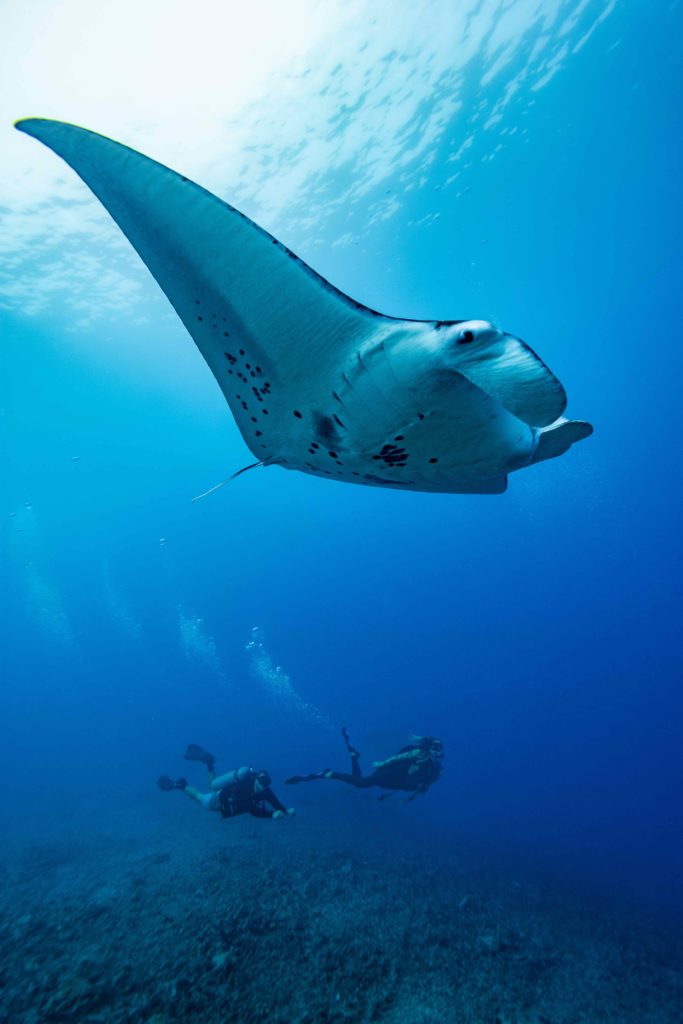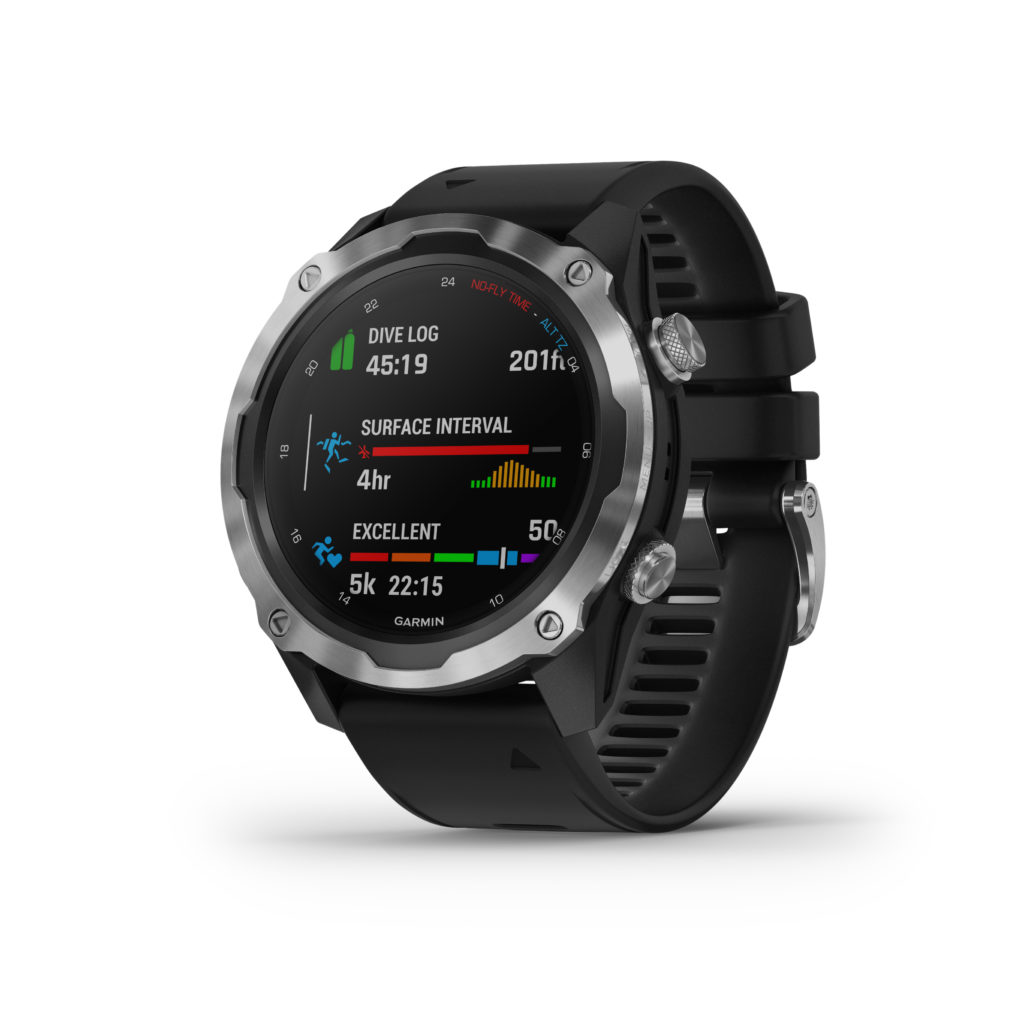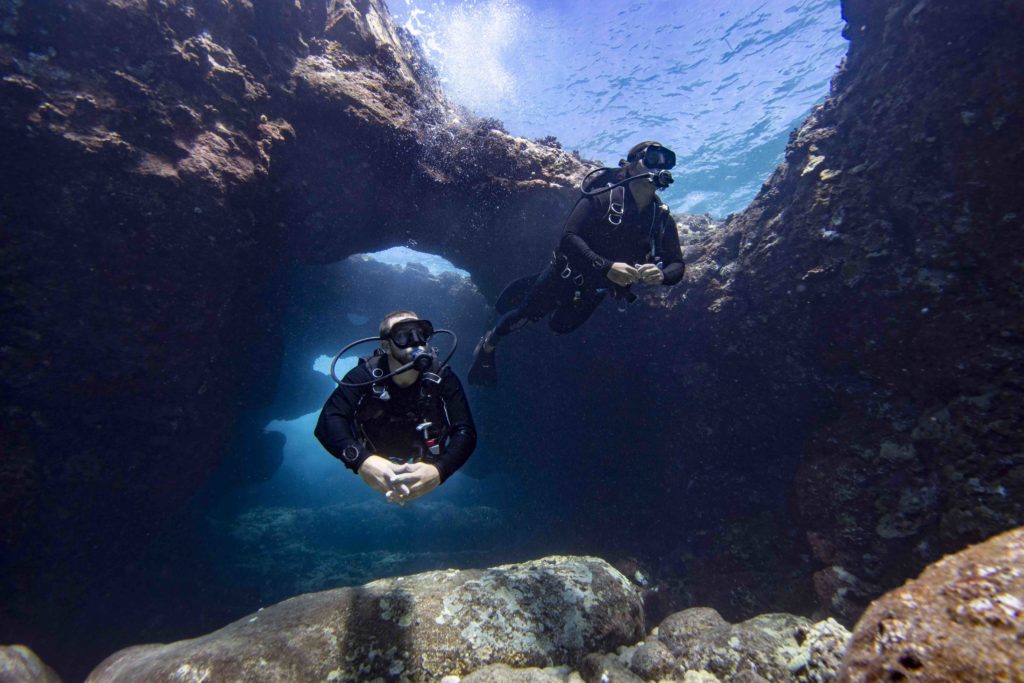Those who have done it once know: little works as relaxing as a thrilling dive into that surprising world below the water's surface. But in the company of a reliable underwater computer, such as the Garmin Descent Mk2...
Text: Jules Bijpost Photography: Garmin
Lately, there has been an increasing amount of talk about space travel. And especially the kind that has recently become accessible to the general public: commercial space flights, where you can experience what it is like to float around weightlessly for a few minutes... All well and good, but that 'general public' is of course only a very small audience in reality, if you look at the price tag that such a floating experience entails. Fortunately, there is an alternative that comes amazingly close in terms of experience and is a lot more manageable financially. Diving.
For many, however, diving is something scary. After all, you move metres deep under water, are surrounded by scary creatures, you get pressure on your ears, you have to be able to clear, you can run out of air and if you are not careful you also get decompression sickness as an unwanted souvenir.
Unwarranted fears, because once you understand how it works -and it's really not that difficult- it is not scary at all anymore and a whole new world opens up to you. One where you can float around weightlessly, enjoying all the beauty around you. From tiny, colourful creatures to the largest creations on earth. Once you are comfortable in their world and fear has given way to trust, you imagine yourself on a completely different planet. And all without having to cough up tens of millions of euros.
Understanding means relaxation
The important thing is first of all to get a bit comfortable in this new environment. Therefore, compare it to driving a car. If you get into such a device without any knowledge and consider that you could crash into a tree at 200km/h, fly out of a corner, hit someone, run out of fuel or collide head-on with all the other cars on the road, that also sounds pretty exciting to say the least.
Until you have taken some driving lessons and know how things work. That you know that you have a speedometer on your dashboard, as well as a fuel gauge, that you can brake yourself at times when you need to and that there are rules to ensure that everyone behaves in a safe manner. Then suddenly it's all not so bad and such a car is actually a damn useful and even fun device. The same principle applies to diving. The less you understand about it, the more exciting it all sounds.
 Specifically. Where do you start?
Specifically. Where do you start?
Simply put: with a diving lesson. Or rather: getting a diving licence. Almost everywhere in the world there are places where you can learn to dive. You can even do this in a pool in the Netherlands, but it is probably more fun to do it in a beautiful environment abroad. Then you immediately know what you are doing it for.
Often, such a first time dive involves an introductory dive. And while this is a great way to experience what it is like to breathe and swim around underwater, it is not necessarily the way to overcome any fear threshold. It is better to opt for a real course, which will get you certified. It will take a bit more time and and require a bit more effort, but you will then understand exactly how everything works and will even be able to dive completely independently (with a buddy).
Then, once you get the hang of it, you can start delving (even literally) into all kinds of different skills. Think wreck diving, cave exploration, deep-sea diving, getting to know marine life, night diving, rescue diving... and so on.
The right gear
When you are floating around at a depth of several metres, with a giant manta above your head the size of two king-size beds, you obviously want to be able to trust your equipment blindly. But what exactly does such diving equipment consist of? Actually, there are four main components that you should not/can not miss.
- The first one speaks for itself, which is the tank filled with the air you breathe underwater. This contains air at the beginning of your dive that is compressed as much as 200x more than normal. Also called 200 bar. That means you could fill a balloon 200x larger than the contents of your tank with it. As you can imagine, there's an awful lot of pressure on this, so you wouldn't be able to just inhale that air straight from your tank. That's where the second part comes into play.
- The breather, or regulator. This is the little device you screw on top of your tank, which then regulates the air pressure and puts the right amount of air through for all the hoses. For the hose that goes to your mouth (and the spare), it makes sure it has the same amount of pressure as the air you are used to breathing in normally. The hose that measures how much pressure is left in the tank (effectively your air-supply gauge), gets an open connection to the tank so that the air pressure is the same and so you can see exactly how much bar is left in your tank. For the last hose, which is attached to your vest, it provides medium pressure (5-10 bar).
- That medium pressure is used to supply your vest with air. This is, in fact, the third essential piece of diving equipment: a buoyancy vest. This looks like a kind of body warmer with lungs and with this you basically make sure you are weightless at the depth you are currently at. For each depth, you need a different amount of air to compensate for your own weight. In a nutshell, it roughly comes down to this: the deeper you want to be weightless, the more air you need to have in your vest. That sounds contradictory, but because every metre you swim down the air is compressed a little more, it gets less buoyancy, so you have to replenish the lungs with a button on that fourth hose.
- Finally, there is the dive computer, or dive watch. This device basically ensures that you can enjoy your time underwater without any worries, and it tells you exactly the rules you need to follow to do everything safely. For instance, it keeps track of exactly how deep you are, how many minutes you can stay at that depth, how much time you need to come back up, at what depths you need to take a break and some even how much air is left in your tank. In addition, it is also an instant logbook and you can see exactly when and how long you dived, how warm the water was, how deep you were, how long you have to wait before you can do another dive or when you can fly again, among other things.
And although those first three items are issued on every dive by the agency you go out with, you won't be getting a dive computer with your equipment anytime soon. Often, you are simply told to follow your dive guide or instructor and his instructions. Now, should you prefer not to put your life entirely in the hands of someone you probably hardly know, it is a good idea to arrange such a clock yourself. If you're lucky, you can hire one in addition to your regular equipment, but it's actually much nicer to carry one yourself. That way, you know exactly how things stand at all times and keep control yourself. Not to mention the advantage of being able to prove at your next party that you really did dive to 38 metres in the middle of the night...
 Bucket list
Bucket list
- This is one of the most remote and pristine island groups on the planet. Located about 1,000 kilometres east of the Philippines, you will find just about all the animals that make a diver's heart beat faster. A liveaboard (longer stay in a 'floating hotel') is especially recommended to visit even the most remote dive sites.
- Cenotes, Mexico. These are gigantic sinkholes with bizarrely clear water, beautiful light and unprecedented abstract underwater landscapes. Once you have googled 'Cenotes diving' once, you are sold.
- Slightly less exclusive, but certainly no less beautiful. It is not for nothing one of the most popular diving destinations in the world with lots of colour, good visibility and lots of different animals like sharks, turtles and dolphins.
- But even if you are 'just' on holiday in a Mediterranean country, it is definitely worthwhile to go diving. In Europe, too, we have plenty of places with beautiful underwater landscapes, large schools of fish, interesting wrecks and very clear water!
For your wrist
If you are looking for a fully-fledged dive computer that is also useful in everyday life, you cannot beat the Garmin Descent Mk2 series. It comes in several versions: the regular Mk2 (52 mm), the slightly smaller Mk2S (43 mm) and with the 'i' after it to indicate that it can be connected to a transmitter to monitor tank pressure.
No matter which variant you choose, the Descent Mk2 is packed with innovative diving technology, preloaded activity profiles and numerous wellness features. This makes it a watch with incredible versatility for both underwater and overwater, featuring a sapphire-glass display that is easy to read in sunlight and interchangeable wristbands in silicone, leather, metal and nylon. And make no mistake, its diving skills are impressive: with support for multiple dive modes such as diving with one or more gas tanks (including nitrox, trimix, and 100% O2), gauge, apnea, apnea hunt and closed-circuit rebreather.
The Mk2 marks entry and exit points at the water surface using multi-GNSS satellite support and includes a 3-axis underwater compass. Divers can view depth, dive time, temperature, NDL/TTS, ascent/descent rate, gas mix, PO2, N2 charge, decompression/safety stop information, time of day and more, directly on the wrist.
Even later, as you store and view dive data from up to 200 dives on the watch or in the accompanying Garmin Dive app, which automatically provides a detailed analysis of each dive activity, including maximum depth, bottom time and a map of surface entry and exit points. With the 'Explore' function in this app, you can also plan your next trip in advance by viewing popular dive sites that have been rated by other users. You will receive useful information such as weather conditions and dive logs of that specific location.
 But as mentioned, even when you're not diving, the Descent Mk2 is ideal to wear 24/7 as a beautiful smartwatch with health monitoring and activity tracking throughout the day, built-in sports apps and, when paired with your smartphone, notifications for incoming calls, texts and calendar notifications right on your wrist. Or make use of Garmin Pay for contactless payments and music storage, so you can also go out without your smartphone. If desired, up to 7 days on 1 battery charge in smartwatch mode or up to 30 hours in dive mode. Costs from €1099 Check for all variants and specs: www.garmin.com
But as mentioned, even when you're not diving, the Descent Mk2 is ideal to wear 24/7 as a beautiful smartwatch with health monitoring and activity tracking throughout the day, built-in sports apps and, when paired with your smartphone, notifications for incoming calls, texts and calendar notifications right on your wrist. Or make use of Garmin Pay for contactless payments and music storage, so you can also go out without your smartphone. If desired, up to 7 days on 1 battery charge in smartwatch mode or up to 30 hours in dive mode. Costs from €1099 Check for all variants and specs: www.garmin.com



